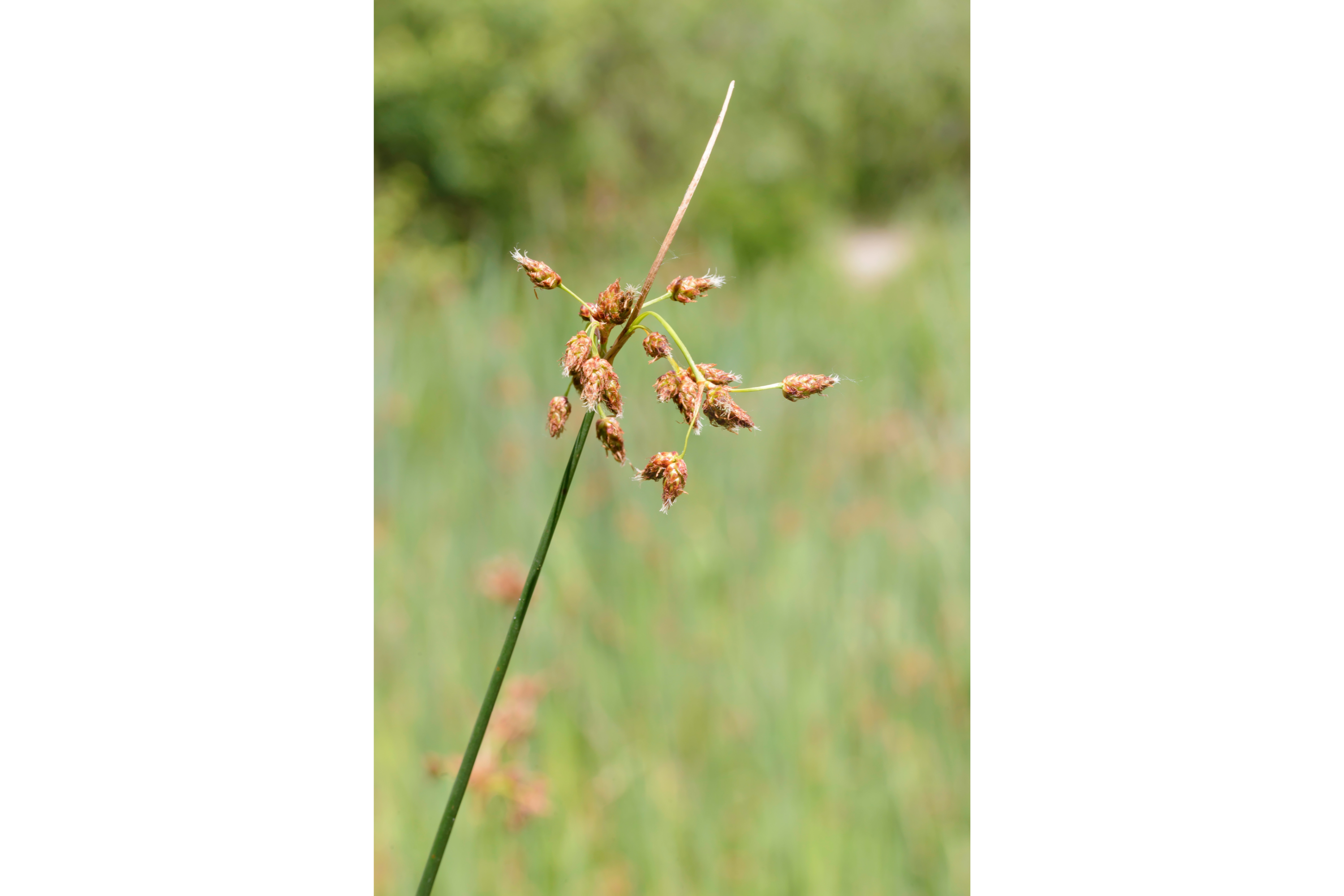Tule
(Schoenoplectus acutus)

Description
Schoenoplectus acutus (syn. Scirpus acutus, Schoenoplectus lacustris, Scirpus lacustris subsp. acutus), called tule /ˈtuːliː/, common tule, hardstem tule, tule rush, hardstem bulrush, or viscid bulrush, is a giant species of sedge in the plant family Cyperaceae, native to freshwater marshes all over North America. The common name derives from the Nāhuatl word tōllin, and was first applied by the early settlers from New Spain who recognized the marsh plants in the Central Valley of California as similar to those in the marshes around Mexico City. Tules once lined the shores of Tulare Lake, California, formerly the largest freshwater lake in the western United States. It was drained by land speculators in the 20th century. The expression "out in the tules" is still common, deriving from the dialect of old Californian families and meaning "where no one would want to live", with a touch of irony. The phrase is comparable to "out in the boondocks". Schoenoplectus acutus has a thick, rounded green stem growing to 1 to 3 m (3 to 10 ft) tall, with long, grasslike leaves, and radially symmetrical, clustered, pale brownish flowers. Tules at shorelines play an important ecological role, helping to buffer against wind and water forces, thereby allowing the establishment of other types of plants and reducing erosion. Tules are sometimes cleared from waterways using herbicides. When erosion occurs, tule rhizomes are replanted in strategic areas. The two varieties are: Schoenoplectus acutus var. acutus – northern and eastern North America Schoenoplectus acutus var. occidentalis – southwestern North America Dyed and woven, tules are used to make baskets, bowls, mats, hats, clothing, duck decoys, and even boats by Native American groups. Before the Salish got horses for bison hunting, they lived in tents covered with sewed mats of tule. At least two tribes, the Wanapum and the Pomo people, constructed tule houses as recently as the 1950s and still do for special occasions. Bay Miwok, Coast Miwok, and Ohlone peoples used the tule in the manufacture of canoes or balsas, for transportation across the San Francisco Bay and using the marine and wetland resources. Northern groups of Chumash used the tule in the manufacture of canoes rather than the sewn-plank tomol usually used by Chumash and used them to gather marine harvests.
Taxonomic tree:







